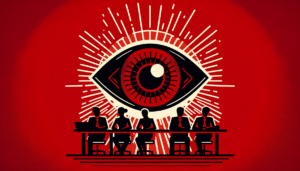Silo elimination, technology simplification: How business-driven HR upgrades existing HR operating models
- 6 Min Read
Blumberg and Millner explore how business-driven HR improves existing HR operating models to deliver commercial impact
- Author: Max Blumberg and Dave Millner
- Date published: Aug 24, 2023
- Categories

Business-driven HR establishes a shared language, eliminates silos between all departments and divisions, simplifies the technology system HR leaders require, and re-evaluates HR teams’ relationship with data. It upgrades existing HR operating models, including data-driven HR, workforce capability-driven HR, and Ulrich’s 1997 HR business partner model.
In the second edition of a three-part Q&A series on business-driven HR fundamentals, Max Blumberg and Dave Millner explore:
- Why existing HR operating models fail to solve business problems
- What steps can HR take to implement business-driven HR and eliminates silos across the organization
- How this method reduces the need for complex technology ecosystems compared with existing HR operating models
1) Why is business-driven HR a more valuable HR operating model than data-driven HR?
Max Blumberg: The primary role of HR is not to resolve data issues but to cultivate the right workforce capabilities that lead to the desired business outcomes for the organization. I was recently surprised to overhear an HR Business Partner advising a colleague to ask an executive about their top three data problems. This approach is misguided. Executives should concentrate on tangible business challenges, such as insufficient sales, low profitability, or high costs, rather than data problems.
As an HR or People Analytics professional, your task is to identify the workforce barriers hindering the business and determine the specific data needed to address those barriers. This responsibility lies with you, not the executive.
The term “data-driven HR” is often used but is flawed. It contrasts business-driven HR, emphasizing data at the expense of the actual business issue. While this approach may benefit technology vendors by promoting the notion that more data leads to more solutions, it often results in aimless data collection without a clear purpose, rarely solving business challenges.
2) How does this operating model approach solving business problems?
Max Blumberg: Experienced analysts know that the starting point must always be the business problem, not the data. First, identify the business problem and the strategic capability issues underlying it. Then, pinpoint the workforce capability issues causing the strategic capability problems, followed by identifying the problematic underlying people processes. After this thorough analysis, you should consider what data might be needed to amend those processes.
For example, if your company struggles with low productivity, I might identify performance management issues at the workforce capability level. Further investigation might reveal that these problems stem from recruiting and training the wrong individuals at the people process level. The solution would then involve adjusting our recruitment and Learning & Development (L&D) processes. We would only gather and analyze the relevant recruitment and L&D data to implement the solution at this stage.
3) How can people leaders use this model to create unity across the organization and increase HR’s commercial impact?
Max Blumberg: It provides a common language for all support functions. So, if marketing’s talking about marketing capabilities and finance about financial capabilities, there is not necessarily a unifying strategic theme that runs across all business functions. A business-driven model looks at strategic capabilities across the firm and eliminates the silo mentality in organizations.
Dave Millner: I was working with a client recently who was concerned with increasing absenteeism, quite rightly. But talking to the business partners, I discovered they went looking for the absenteeism data. They told me absenteeism increased by X percent. But why didn’t they raise the issue of the impact of absenteeism on the drivers of the business? I explained it was bound to be customer experience, productivity, quality, or several other things. We’ve got to try and raise these issues to a business level. This is where HR is missing a trick. Ulrich’s model was called HR business partner for a specific reason–to focus on business issues. Now we’re going back to way before the business partner and spending all our time talking about people because that’s what we’re allegedly responsible for. The business-driven approach is far more credible and commercial.
4) How does it shift the way HR leaders use data and people analytics dashboards from under other HR operating models?
Dave Millner: We need to have a plan for our data and how we’re going to maintain the quality of the data. That doesn’t mean producing more dashboards. Dashboards do not equal people analytics. Technology’s role within HR is to provide access to high-quality data and to productize what is produced so that it’s accessible to all.
Not many organizations have their own AppStore. Yes, we’ve got HRS and automation platforms. But we need to be able to gather additional information. There could be a simplification of platforms and a creation of connections to other areas of the organization that could give us greater access to business data.
Max Blumberg: When faced with a business problem, it’s unlikely that the data you need to solve it will already be available in the system. More often than not, you’ll have to generate this data yourself. If the necessary data were already at hand, the problem would likely have been addressed. In my experience, this scenario holds true time and again.
5) How can this approach help HR leaders reduce the complexity of their technology ecosystem compared to other HR operating models?
Max Blumberg: A business-driven HR approach requires significantly less technology than data-driven HR, which often collects data indiscriminately. In contrast, business-driven HR focuses solely on gathering the data necessary to address specific business challenges, eliminating the need for vast data lakes.
For instance, if you informed me that customer growth is lagging in your organization, I wouldn’t indiscriminately collect data such as the distance each employee lives from work or their performance scores. Such information is most likely irrelevant. Instead, I would concentrate on identifying the factors driving innovation. I might even solve the problem using a simple data file and basic ChatGPT, Python, or R rather than resorting to complex and costly technology, albeit fun to experiment with. This targeted approach reduces complexity and aligns technology use with actual business needs.









